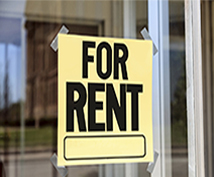Rental Property Performance
The Urban Land Institute expects apartment rental rates to maintain sustainable, but modest growth for 2017 and 2018. Vacancy rates should remain below the 20 year average. Residential rental rates have been soaring, and forecasts call for continued property value growth in most cities. Forbes projects home price appreciation to be close to 30% by 2020 in top cities such as Dallas, Jacksonville, Orlando, Seattle, and West Palm Beach. Rental Housing Journal forecasts that the average rental rate in America will hit $1,500 per month in 2017, and continue to outpace inflation.
Access to Rental Property Investments
Another significant factor adding to the growth of rental property investment is the accessibility and efficiency being added by technology. Investors know have access to more data to find and evaluate acquisition opportunities fast. Technology also now enables them to buy and manage these assets more profitably than ever before, allowing for even greater appreciation and appeal.
Commercial Mortgage Lenders Fueling the Market
It may still be difficult for regular home buyers to find loans, but commercial mortgage lending is expected to bounce back to $100B in 2017 and 2018. Confident lenders, with new loan programs are fueling investors with the capital they need through a variety of conduits. With lower credit score barriers and stated income loans more investors will be able to borrow and buy more.


 Rental property investment activity is expected to soar in 2017 fueled by new confidence and a brighter economic outlook. Home sales hit a new record in January 2017 according to NAR and the US Census Bureau. Builders are expected to continue to expand, and investors are eagerly searching for deals. It all bodes well for the market for the foreseeable future. At least for those with the capital and financial sources to seize on current opportunities.
Rental property investment activity is expected to soar in 2017 fueled by new confidence and a brighter economic outlook. Home sales hit a new record in January 2017 according to NAR and the US Census Bureau. Builders are expected to continue to expand, and investors are eagerly searching for deals. It all bodes well for the market for the foreseeable future. At least for those with the capital and financial sources to seize on current opportunities.